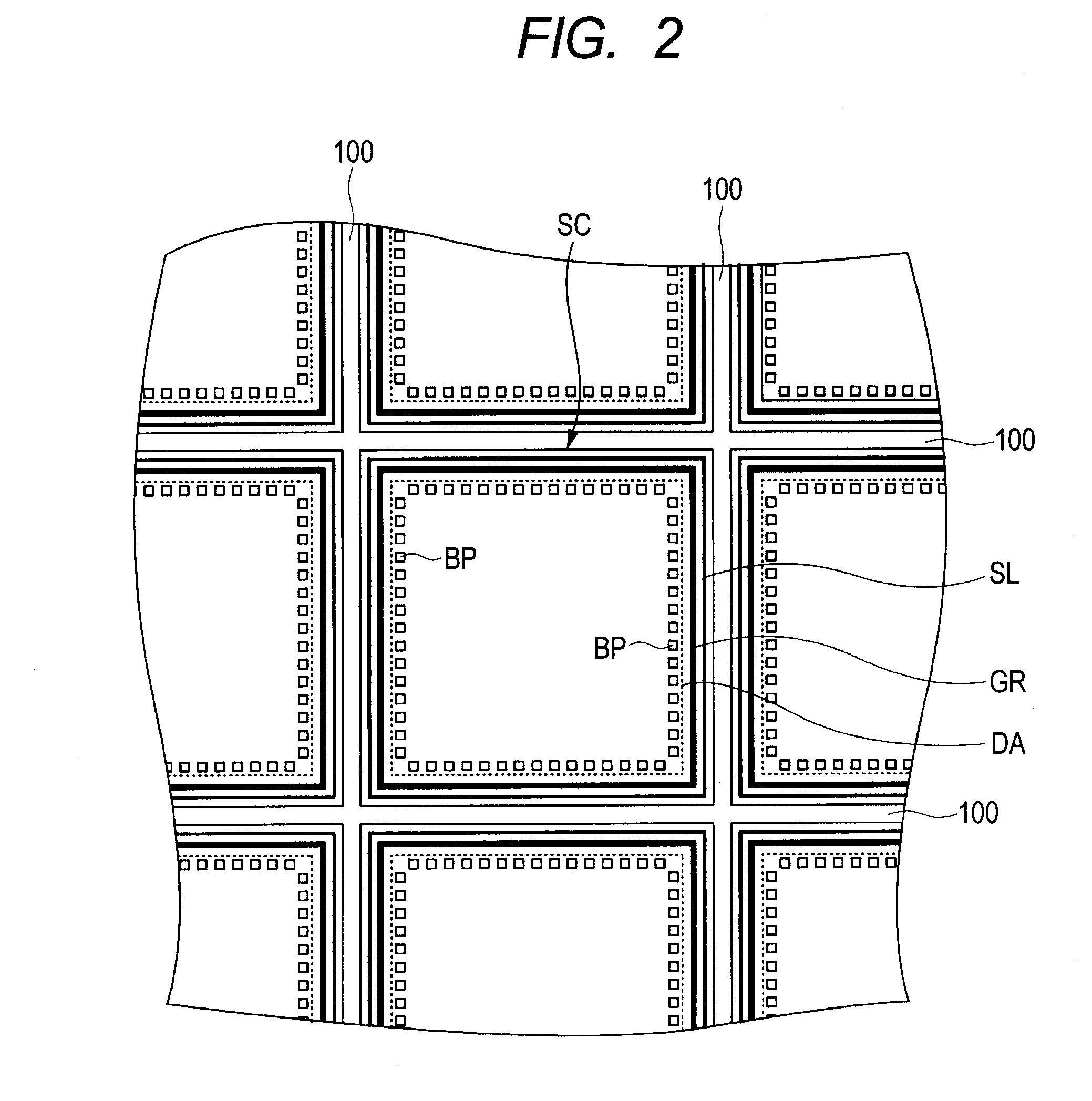Semiconductor device, and manufacturing method of semiconductor device
- Summary
- Abstract
- Description
- Claims
- Application Information
AI Technical Summary
Benefits of technology
Problems solved by technology
Method used
Image
Examples
first embodiment
[0047]With reference to FIGS. 1 and 2, a semiconductor device according to the first embodiment is described hereinafter. FIG. 1 is a partial sectional view of the semiconductor device, and FIG. 2 is a partial plan view of the device.
[0048]As illustrated in FIG. 1, a semiconductor device comprised of various desired semiconductor elements is formed in / over a main surface of a semiconductor substrate (semiconductor wafer worked in the form of a circular thin plate) made of a silicon monocrystal, so as to be assigned to each of divided semiconductor chips in the main surface. Examples of the semiconductor elements include CMOS (complementary metal oxide semiconductor) devices, resistance elements, and capacitance elements. In the first embodiment, CMOS devices are given as examples. A p-channel MISFET which configures a CMOS device is abbreviated as a pMIS, and an n-channel MISFT which configures a CMOS is abbreviated as an nMIS.
[0049]In each element formation region of the semiconduc...
second embodiment
[0092]In the first embodiment, the inner walls (the side surfaces and the bottom surface) of the slit SL made to surround the circumference of the guard ring GR are covered with the second passivation film 32, thereby preventing water from invading the element formation region through the slit SL. Moreover, the side surface of the opening 31, which is made to make the upper surface of the sixth-layer interconnection M6 used for the bonding pads BP naked, is covered with the second passivation film 32, thereby preventing the TiN film 28 from being made naked, so as to prevent the first passivation film 30 from being cracked by an expansion in the volume of the TiN film 28 through oxidization. In this way, the invasion of water into the element formation region through cracks is prevented.
[0093]In the second embodiment, a sixth-layer interconnection which is an interconnection of a top layer is covered with a first passivation film in the same way as in the first embodiment; however, ...
third embodiment
[0107]A semiconductor device according to present the third embodiment is described with reference to FIGS. 16 and 17.
[0108]A description is first made about an example of the semiconductor device according to the third embodiment with reference to FIG. 16, which is a partial sectional view of this device example and illustrates upper-layer interconnections (corresponding to the above-mentioned fifth- and sixth-layer interconnections M5 and M6) in an element formation region and a slit region of the device example.
[0109]As illustrated in FIG. 16, a sixth-layer interconnection M6 is covered with an insulating film 29 for bonding, and a first passivation film 30. The bonding insulating film 29 is, for example, a silicon oxide film formed by plasma CVD, and is laid to prevent the first passivation film 30 from being peeled. The thickness thereof is, for example, about 70 nm.
[0110]The first passivation film 30 is a laminated film comprised of a lower-layer passivation film 30a and an up...
PUM
 Login to View More
Login to View More Abstract
Description
Claims
Application Information
 Login to View More
Login to View More - R&D
- Intellectual Property
- Life Sciences
- Materials
- Tech Scout
- Unparalleled Data Quality
- Higher Quality Content
- 60% Fewer Hallucinations
Browse by: Latest US Patents, China's latest patents, Technical Efficacy Thesaurus, Application Domain, Technology Topic, Popular Technical Reports.
© 2025 PatSnap. All rights reserved.Legal|Privacy policy|Modern Slavery Act Transparency Statement|Sitemap|About US| Contact US: help@patsnap.com



